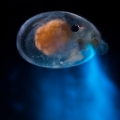Eyes and vision are often considered mind-bogglingly complex, begging the question of how evolution could have produced them. We are addressing this question by examining the components of eyes and vision in a phylogenetic context, to trace those components to their very origins.




